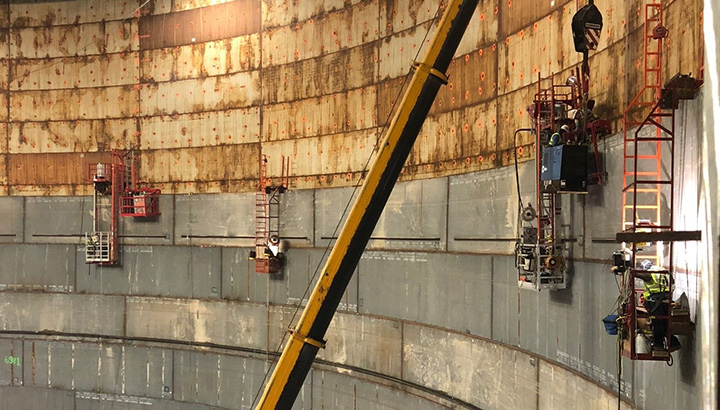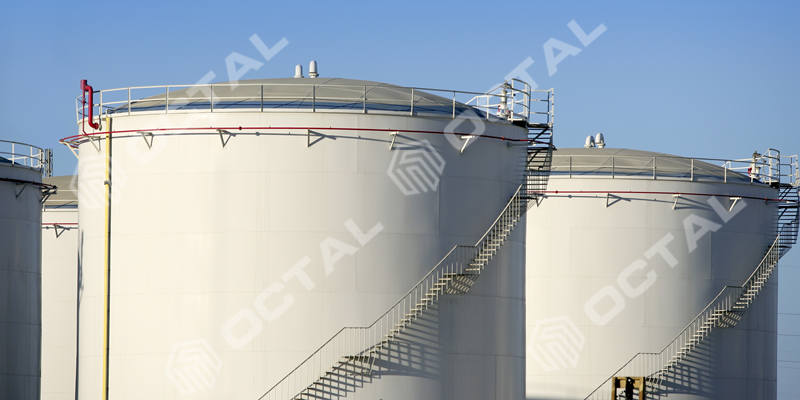API 650 Welding Inspection: Essential Steps for Maintaining High-Quality Welds
Just How Welding Inspection Functions: A Comprehensive Guide for Professionals
Welding examination plays an important duty in making sure the security and integrity of bonded frameworks. It includes a systematic strategy that includes both aesthetic assessment and advanced testing approaches. Professionals have to familiarize themselves with essential requirements and guidelines governing the market. Recognizing the common problems that can develop throughout welding is important. This guide will discover these elements thoroughly, giving insights into the processes that support high quality and honesty in welding.
Understanding the Significance of Welding Assessment
While many may ignore the importance of welding assessment, it plays a crucial role in guaranteeing the integrity and safety of welded frameworks. Efficient welding assessment determines prospective flaws and problems that can jeopardize structural strength and result in catastrophic failures. The assessment procedure encompasses numerous strategies, such as visual evaluations, ultrasonic testing, and radiographic assessments, each adding to the total analysis of weld top quality.
Along with securing the structural integrity, welding examination ensures compliance with industry requirements and customer specs. By guaranteeing that welds meet called for resistances and features, inspections aid preserve the integrity and long life of components in numerous applications, from building to aerospace. A rigorous examination process cultivates a culture of top quality and responsibility amongst welders and producers. Eventually, welding inspection is not simply a step-by-step step; it is a crucial technique that underpins the safety and security and efficiency of engineered systems throughout varied industries.
Trick Criteria and Laws in Welding Examination
The foundation of efficient welding inspection hinges on adherence to developed guidelines and standards. Different companies, such as the American Welding Culture (AWS) and the American National Standards Institute (ANSI), set forth guidelines that ensure quality and safety in welding methods. Secret criteria, such as AWS D1.1 for architectural welding and ASME Section IX for pressure vessels, offer detailed criteria for welding examinations, procedures, and qualifications. Regulatory frameworks, including those from the Occupational Safety and Health Administration (OSHA), required safety and security techniques and employee defenses in welding atmospheres. Compliance with these standards is vital for attaining regular weld top quality and lessening the risk of failings. In addition, global criteria like ISO 3834 additionally improve worldwide consistency in welding inspection techniques. Specialists need to stay informed concerning these laws to ensure that their evaluation methods straighten with market expectations and legal demands, consequently guarding both employees and structural honesty.
First Preparation and Aesthetic Assessment Techniques

Reliable welding assessment begins with a complete pre-inspection checklist that ensures all necessary conditions are fulfilled before the real inspection occurs. Following this prep work, visual flaw identification plays a vital duty in assessing weld top quality, allowing examiners to detect problems such as splits or incorrect blend. Together, these methods create the structure for a successful welding evaluation procedure.
Pre-Inspection List
Prior to commencing any welding assessment, a thorough pre-inspection checklist is necessary to ensure that all necessary preparations are completed and that visual evaluation methods are properly used. Crucial element of this list consist of verifying the welding procedure specification (WPS), seeing to it all equipment is calibrated and in great functioning problem, and verifying that the assessor has the needed qualifications. In addition, it is essential to assess any kind of previous examination records and to analyze the workplace for security dangers. The examiner ought to also verify that all relevant documents, such as product certificates and assessment records, is easily available. Completing this list helps to establish a strong structure for a successful evaluation process, enhancing the integrity of the outcomes acquired.
Aesthetic Flaw Identification
An effective visual defect recognition process starts with cautious first preparation and the application of established aesthetic examination techniques. Assessors ought to assure that the welding area is tidy and well-lit, as ample exposure is essential for detecting issues. A complete evaluation of the weld joint's surface enables the identification of discontinuities, such as fractures, damages, or porosity. Inspectors usually utilize devices like multiplying glasses or mirrors to improve their sight of hard-to-reach locations. Additionally, they must know with the particular welding criteria and standards relevant to the job. By sticking to these approaches, inspectors can efficiently recognize potential problems, guarding the important site integrity of the weld and compliance with market criteria.
Non-Destructive Screening Methods: A Summary
Non-destructive testing (NDT) techniques play a crucial role in the welding evaluation process by making sure the honesty and reliability of welded structures without triggering any type of damages (API 650 Welding Inspection). These methods enable assessors to review the top quality of welds while preserving the components being examined. Usual NDT methods include ultrasonic testing, radiographic testing, magnetic particle testing, and dye penetrant testing, each offering unique advantages
Ultrasonic screening uses high-frequency audio waves to detect internal flaws, while radiographic testing utilizes X-rays or gamma rays to envision the inner framework of welds. Magnetic bit testing exposes surface and near-surface defects by applying an electromagnetic field and iron fragments to the weld area. Dye penetrant testing highlights surface-breaking flaws via the application of a tinted dye. Together, these NDT methods give essential insights into weld high quality, allowing experts to make educated decisions concerning safety and security and compliance in welding applications.
Typical Defects and Their Implications
Recognizing typical problems in bonded joints is essential for keeping structural integrity and safety and security. Different problems can develop during the welding procedure, each bring possible ramifications for the total efficiency of the structure. Porosity, identified by little gas pockets within the weld, can compromise the joint and endanger its load-bearing capacity. Splits may create because of thermal stress or incorrect cooling, bring about potential failing under tension. Insufficient fusion takes place when the weld metal does not totally bond with the base material, leading to weak joints that might not endure desired tons. Damaging, where the base metal is worn down, can additionally decrease the efficient cross-section of the weld. Additionally, extreme support can create tension focus that could lead to failing. Identifying these problems without delay permits corrective procedures, ensuring the durability and dependability of bonded structures in vital applications.
Devices and Equipment Utilized in Welding Assessment
Reliable welding inspection relies on a range of specialized devices and tools to guarantee the quality and stability of welded joints. Necessary tools include visual inspection tools, such as amplifying borescopes and glasses, which permit assessors to very closely check out welds for surface defects. Non-destructive testing (NDT) methods, such as ultrasonic testing, radiographic testing, and magnetic particle testing, are fundamental for identifying internal defects without damaging the material.
Measurement tools, including calipers and weld determines, assist analyze measurements and identify compliance with specs. Furthermore, hardness testers evaluate the mechanical residential or commercial properties of welded joints. Personal protective tools (PPE) is additionally essential, securing the safety and security of assessors while operating in potentially hazardous settings (API 650 Welding Inspection). Each device serves a specific have a peek at these guys objective, jointly improving the efficiency of welding inspection and adding to the dependability of completed tasks
Often Asked Concerns
What Qualifications Are Required to Become a Welding Assessor?
To end up being a welding assessor, individuals generally require appropriate certifications, such as AWS CWI or CSWIP, in addition to experience in welding processes, design principles, and expertise of assessment techniques, safety and security requirements, and relevant codes.
Exactly How Frequently Should Welding Inspections Be Performed?
Welding assessments should be carried out routinely, preferably at various job stages, including pre-weld, during-weld, and post-weld. Regularity may likewise rely on market criteria, task requirements, and the complexity of the welds entailed.
Can Welding Defects Be Repaired After Evaluation?

Yes, welding issues can commonly be fixed after examination. Depending on the seriousness and kind of flaw, ideal approaches such as reworking or additional welding may be employed to restore structural integrity and safety compliance.
What Industries Require Regular Welding Evaluations?

Various sectors, consisting of building and construction, site web production, aerospace, and vehicle, need routine welding assessments - API 650 Welding Inspection. These assessments assure adherence to security requirements and quality assurance, reducing risks associated with architectural integrity and functional efficiency in welded components
Just how Do I Pick a Welding Assessment Service?
To choose a welding inspection solution, one ought to think about qualifications, experience, certifications, and sector track record. Additionally, assessing consumer reviews and assuring the service fulfills appropriate standards can aid ensure quality examinations and trusted outcomes.

While numerous may ignore the relevance of welding examination, it plays a vital function in ensuring the integrity and safety and security of welded structures. Trick standards, such as AWS D1.1 for structural welding and ASME Section IX for stress vessels, provide complete standards for welding procedures, certifications, and evaluations. Efficient welding evaluation begins with a complete pre-inspection list that assures all essential conditions are met before the actual inspection takes place. Before commencing any welding inspection, an extensive pre-inspection checklist is vital to ensure that all needed preparations are completed and that visual inspection techniques are effectively used. Non-destructive screening (NDT) approaches play a necessary function in the welding assessment process by guaranteeing the stability and reliability of welded frameworks without triggering any kind of damages.